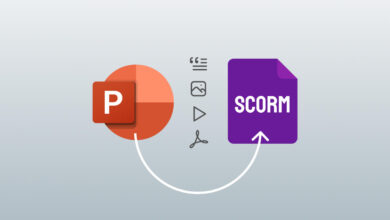From Followers to Fans: Proven Strategies for Building an Engaged Online Community
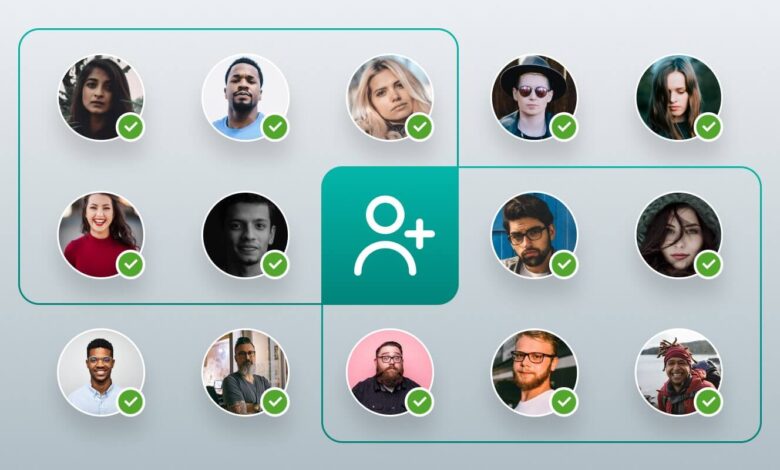
Imagine harnessing the energy of a buzzing marketplace where every interaction sparks innovation and loyalty. That’s the promise of online communities for businesses creating and selling courses today.
In a world where customer retention rates can soar by up to 40% for companies with engaged online communities, and content engagement can see a 30% boost, the growth potential is astronomical.
Picture this: a community where your course members aren’t just passive recipients but active participants, creators, and even evangelists of your content. This transformation can drive course completion rates higher, generate invaluable user-generated content, and ignite powerful word-of-mouth marketing. It’s a game-changer backed by the fact that 68% of branded communities report a surge in new leads due to their efforts!
In this post, we’ll delve into the cutting-edge strategies that turn followers into fervent fans. From tapping into the psychology of engagement to utilizing the latest AI tools, we’ll explore how to craft a dynamic and thriving online community.
Whether you’re launching a new community or revitalizing an existing one, these insights will empower you to build a vibrant ecosystem around your online courses.
Ready to revolutionize your audience into a dedicated, engaged community? Let’s embark on this journey from followers to fans together.
Understanding the Core Principles of Engagement
Human psychology plays a crucial role in how individuals interact within online communities. Understanding these psychological factors can help you craft strategies that drive deeper engagement.
🔑 Key principles of community engagement include:
Social Identity Theory: People derive a sense of identity and self-esteem from the groups they belong to. When community members feel they are part of a distinct group with shared values and goals, their engagement levels increase. This sense of belonging fosters loyalty and active participation.This idea aligns closely with Maslow’s hierarchy of needs, where belongingness and love are fundamental for psychological well-being. When these social needs are met, individuals are more motivated to engage and contribute to their communities.
💡To apply the Social Identity Theory, create a distinct community identity that emphasizes shared values, goals, and a sense of belonging among members.
Start by defining core values and goals for your community, such as innovation, resilience, and collaboration. Communicate these values consistently across all your community-building interactions and materials (e.g. your community guidelines).
Set common goals, like helping members launch their startups, achieve specific milestones, or master particular skills. This creates a clear, shared purpose that unites like-minded groups of people and makes them feel part of something larger. “Like-minded people” is your focus point in this case.
Next, create a unique identity for your community. Develop a community name, logo, and branding that reflects your core values and helps you build brand awareness.
For instance, you might call your community “Innovative Entrepreneurs Network” and use a logo that symbolizes growth and innovation. Consistent branding across your website, social media platforms, and course materials reinforces this identity and helps members feel connected to the group, building up your brand loyalty at the same time.
💁 Read more on how to build your brand strategy in our Personal Branding Guide
Fostering a sense of belonging is also crucial. Encourage members to introduce themselves and shared interests, their entrepreneurial journeys, challenges, and successes.
Create subgroups or “cohorts” within the community based on specific common interests or stages in their entrepreneurial journey. This allows members to find others with similar experiences and goals, enhancing their sense of belonging and engagement.
Celebrate member achievements to strengthen the community bond. Recognize and celebrate successes such as launching a business, securing funding, or reaching significant milestones.
Highlight these achievements in newsletters, social media, and community forums to foster pride and a sense of belonging. This not only boosts individual self-esteem but also reinforces the group’s identity and values.
The very successful online community, Reddit, known for its vast array of topic-specific layout, leverages Social Identity Theory. Subreddits (individual communities within Reddit) allow users to find niche groups where they feel a strong sense of belonging and identity, leading to higher engagement and loyalty.
2. Reciprocity: The principle of reciprocity, where people feel obliged to return favors or gestures, can also be leveraged in online communities. When community leaders or members provide valuable content or assistance, it encourages others to reciprocate, creating a cycle of positive interaction.
💡Here’s how you can apply reciprocity to your online community:
Let’s say that you run a community for your online course on digital marketing. To leverage reciprocity, you could start by offering valuable, free resources to your community members.
For instance, you might provide free webinars on a regular basis where you share advanced tips and strategies that go beyond the course content. These sessions offer additional value while demonstrating your commitment to your community members’ success.
You can also offer exclusive eBooks, cheat sheets, or case studies that will help the audience of your community in their learning journey. These resources should be highly relevant and actionable.
And if you want to add an even more personalized approach – given that the size of your community audience and your resources allow it – you can even offer personalized feedback.
Spend time reviewing your members on their projects or assignments to help them improve and show that you care about their progress. This will boost customer satisfaction and engagement if you are involved in coaching, mentoring, or consulting.
3. Intrinsic Motivation: Intrinsic motivators such as the joy of learning, the satisfaction of helping others, and the pleasure of being recognized are powerful drivers of engagement. Communities that tap into these intrinsic motivators often see higher levels of participation and contribution.
💡Here’s how you can use intrinsic motivators for your own community:
Let’s say that you run a course on graphic design. To leverage intrinsic motivation, you can create opportunities for members to experience the joy of learning, the satisfaction of helping others, and the pleasure of recognition.
First, foster a culture that celebrates the joy of learning. Offer a variety of challenges and projects that allow members to apply their skills creatively.
For example, you might use your online forum to host monthly design contests where members can submit their work on a specific theme or project. These contests provide a platform for learning and improvement while making the process fun and engaging.
Second, encourage members to help each other by creating mentorship opportunities and turn your community into a true learning community. Pair experienced members with newcomers to guide them through the course content and projects.
This peer-to-peer support system enhances the learning experience for the mentees and provides mentors with a sense of satisfaction from helping others, and helps you build relationships right within your online community platform.
Platforms like Stack Overflow thrive on this intrinsic motivation model, where users earn reputation points for helping others, which in turn motivates them to continue contributing.
Third, recognize and celebrate member contributions. Publicly acknowledge achievements in newsletters, social networks, and community forums.
For example, you can create a “Member of the Month” feature where you highlight an individual’s contributions, whether it’s exceptional design work, helpful feedback, or active participation in discussions.
You can even incorporate this into your content marketing strategy by adding a section to your regular newsletter. Highlight the extra benefits that come with being a paid customer. This way, leads and potential customers can see the added value of joining your community.
Last, but certainly not least, recognition can also come in the form of badges or points that members earn for their activities, which can be displayed on their profiles.
The language learning platform Duolingo utilizes gamification, which taps into intrinsic motivation and the psychology of achievement. By incorporating levels, rewards, and streaks, Duolingo keeps users motivated to engage regularly.

The Role of Authenticity & Trust
Authenticity is a cornerstone of trust in any community. When community leaders and members present themselves genuinely, it fosters a culture of trust and openness. Key aspects of authenticity include transparency, consistency, and responsiveness. Regardless of the type of online community you have or want to build, incorporating these principles into your online community can transform it from a passive group of followers into an active, engaged network of fans who are deeply invested in your business’s success.
Transparency is all about being open about your community’s goals, rules, and any commercial interests. Transparency about data usage, changes in policies, and community direction ensures that members feel secure and valued.
The social media management platform Buffer is known for its transparency. Buffer shares detailed financial reports, salary information, and decision-making processes openly with its community. This level of openness has built a strong foundation of trust and loyalty among its users.
Consistency evolves around consistent behavior and messaging from community leaders to reinforce trust. When members see reliable and steady communication and actions, their trust in the community’s leadership grows.
The outdoor clothing brand Patagonia has built trust through its commitment to environmental sustainability and ethical practices. By consistently aligning its actions with its stated values and being transparent about its business practices, Patagonia has cultivated a dedicated and engaged community.
Responding timely and thoughtfully to member inquiries and feedback demonstrates that the community values its members, thereby building trust and loyalty.
LearnWorlds serves as an exemplary model of a brand that responds timely and thoughtfully to member inquiries and feedback, thereby building trust and loyalty within its community. As a platform dedicated to creating, selling, and managing online courses, we prioritize customer support and community engagement through several key strategies.
Firstly, LearnWorlds maintains a dedicated customer support team available 24/7 to address any issues or questions that course creators and learners might have. Our team is renowned for providing quick, detailed, and personalized responses to ensure that users feel supported and valued.
We also offer a comprehensive Help Center with articles, step-by-step guides, and video tutorials to assist users in navigating the platform.
In addition to these support measures, we actively engage with our community through social media, forums, and webinars. We frequently host live Q&A sessions where users can ask questions in real time and receive immediate feedback from experts addressing their pain points. This proactive engagement helps foster a strong sense of community and ensures that our users feel connected and supported.
Moreover, we take user feedback seriously and often implement changes based on the suggestions and issues raised by our community. This responsiveness not only improves the platform but also shows users that their opinions are valued and acted upon.
By responding promptly and thoughtfully to inquiries and feedback, we demonstrate our commitment to our users, building a strong sense of trust and loyalty within their community.
This proactive approach enhances the overall user experience, making users feel appreciated and heard, which is crucial for long-term engagement and success.
Crafting a Magnetic Community Culture
Creating a vibrant and engaging community starts with crafting a magnetic culture that attracts and retains members. A well-defined community culture helps build a loyal following and ensures that members feel a deep sense of belonging and connection. This involves defining a unique community identity and fostering inclusivity and belonging.
By establishing clear values, consistent branding, and an inclusive environment, you can create a community that resonates with its members and encourages active participation.
Let’s explore how to achieve this through defining a unique community identity and fostering inclusivity.
Defining a Unique Community Identity
To create a distinctive and appealing community identity you need to take the following 3 key steps:
STEP 1 – Identify Core Values: Define the core values your community stands for. These should resonate with your target audience and reflect the mission of your business.
STEP 2 – Create a Memorable Brand: Develop a unique visual and verbal brand that represents your community. This includes logos, color schemes, and a consistent tone of voice.
STEP 3 – Develop a Community Manifesto: Write a manifesto that outlines the purpose and goals of your community. This document serves as a guiding principle for all members.
💡A renowned example of an online community with a strong unique identity is Lego Ideas, a platform where Lego enthusiasts can submit and vote on new Lego set ideas that can become the next new product for Lego!
This community has a clear identity centered around creativity and innovation, fostering a strong sense of belonging among its members.
Fostering Inclusivity & Belonging
Ensuring every member feels welcome and valued is key to a thriving community, right? So, let’s dive into our top 3 shortlist of the most effective, tried-and-tested strategies to foster inclusivity:
📣Spotlight on All Voices: Make sure your community reflects a wide range of voices and perspectives. Highlight diverse members, feature a variety of content, and actively promote inclusivity.
Here’s an example of a thriving community that’s all about inclusivity, the Black Girls Code. This community aims to increase the number of women of color in the digital space by empowering girls of color to become innovators in STEM fields. Their inclusive approach has created a supportive and thriving community.
🧑🤝🧑Talk it Out, All About: Encourage respectful and open communication among members. Create safe spaces where people can share their experiences and opinions without fear of judgment or exclusion.
🙌Empower & Support: Provide resources and support for members who may feel marginalized or underrepresented. This includes mentorship programs, dedicated support groups, and accessible content.
A brilliant example of a thriving online community that applies all three of the above key strategies is Twitch, a popular live-streaming platform. Twitch has made significant efforts to promote inclusivity by implementing features like the Safety Advisory Council, which addresses issues of harassment and marginalization within the community.
Engagement Tactics that Wow and Win
Gamification and Rewards: Engage and Excite!
Gamification can significantly boost engagement by tapping into our competitive and achievement-oriented nature. By introducing elements that reward active participation and accomplishments, you can enhance member interaction and motivation in your online community.
You can start by setting up a reward system. This is a crucial step in implementing gamification, after all. Introduce points, badges, and leaderboards to acknowledge and reward your members’ efforts and achievements. This way, you will provide tangible recognition for participation and encourage ongoing engagement of your members.
Who doesn’t love a good challenge? It’s a fantastic way to spice things up! Creating fun and engaging quests is a surefire strategy to get your community buzzing. By developing exciting challenges, you’re inviting members to dive deeper into the content and interact more with each other. Think of these challenges as a blend of education and fun, turning the learning process into an engaging adventure. This way, everyone’s not just learning – they’re also having a blast!
Offering exclusive perks is also a powerful motivator. Providing your members with exclusive access to content, events or merchandise as rewards for high levels of engagement can drive participation. These perks incentivize your members to stay active and contribute more to your online community.
Looking for some inspiration on how to make the trio of rewards, challenges, and exclusive perks work for you? Check out how Calisthenics and Bizhack Academy lead the charge with their successful gamification strategies in online communities.
Calisthenics Academy
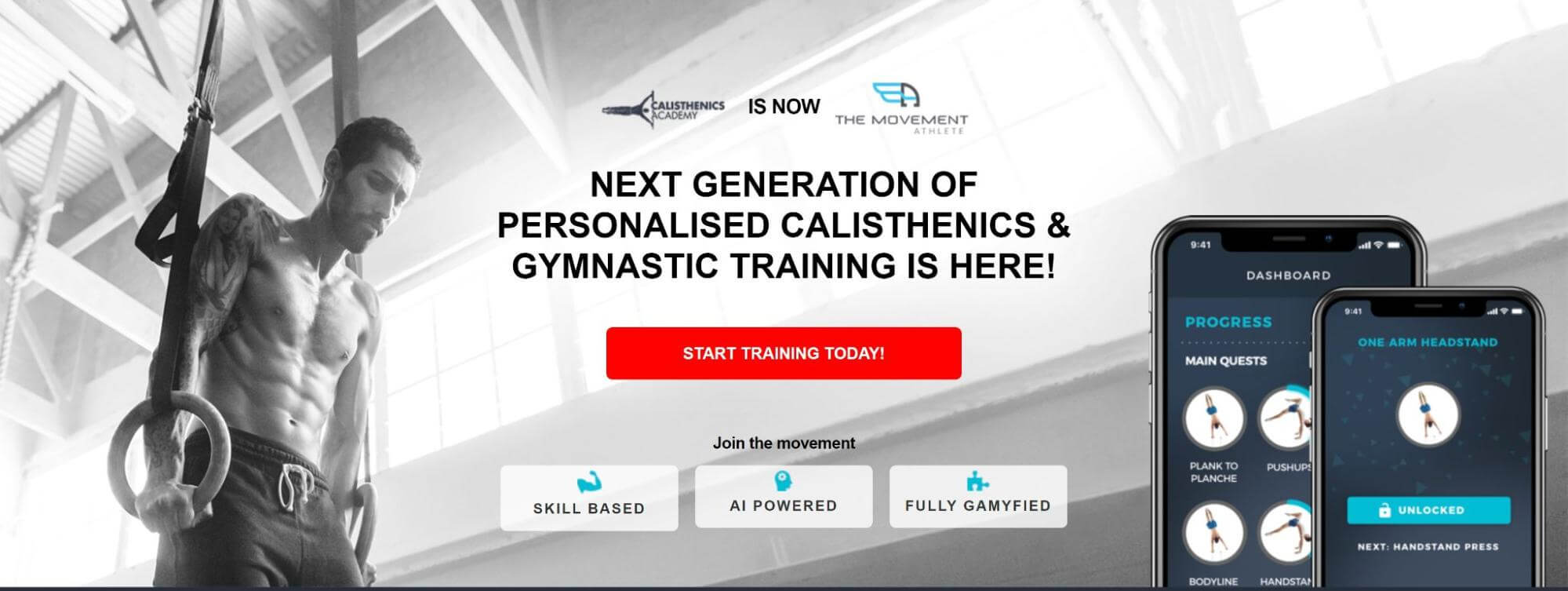
Calisthenics Academy has successfully transitioned from a local setup to a global online platform, amassing 40,000 students in under a year. They offer a wide range of fitness programs designed to help students master bodyweight exercises.
Their community features include interactive forums, live Q&A sessions, and a supportive network where members can share progress, challenges, and success stories.
This community-driven approach not only boosts engagement but also fosters a sense of belonging and mutual support among members.
Calisthenics Academy has successfully leveraged gamification elements to engage its global community of fitness enthusiasts.
Here’s how they incorporate the trio of rewards, challenges, and exclusive perks:
Rewards: Members earn badges and certificates for reaching fitness milestones, which provide tangible recognition for their efforts.
Challenges: The academy regularly organizes fitness challenges that encourage members to push their limits and engage more deeply with the content. These challenges not only motivate participants to stay active but also foster a sense of community through shared goals.
Exclusive Perks: The Calisthenics Academy gives its members access to exclusive workout plans, personalized coaching sessions, and early access to new programs, enhancing their overall experience and incentivizing continued participation.
Bizhack Academy
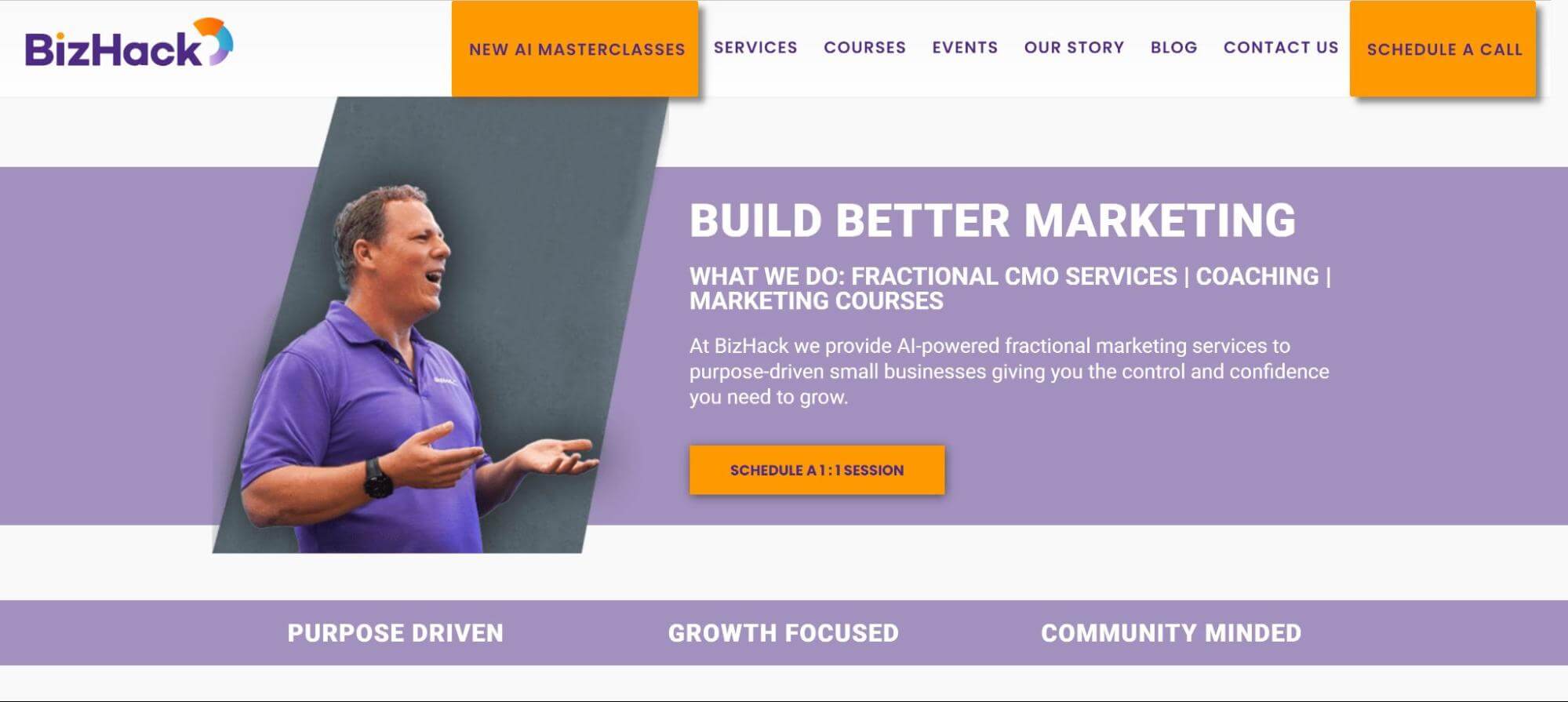
Bizhack provides digital marketing training to over 1,000 businesses, focusing on practical skills and real-world applications.
By leveraging LearnWorlds’ comprehensive suite of tools, Bizhack has created a dynamic learning environment that includes webinars, interactive courses, and a vibrant community forum.
These features allow students to engage deeply with the content, connect with peers, and receive timely feedback from instructors, enhancing the overall learning experience and building a strong, active community.
Bizhack Academy employs several strategies to keep its community engaged through the use of rewards, challenges, and exclusive perks:
Rewards: Bizhack offers digital badges and certificates for course completion and participation in community activities. These rewards help recognize and celebrate members’ achievements.
Challenges: The academy frequently hosts interactive challenges, such as marketing strategy contests and project-based assignments, which encourage the practical application of learned concepts and foster collaborative learning.
Exclusive Perks: Participants in Bizhack’s programs gain access to exclusive webinars, one-on-one mentoring sessions with industry experts, and premium content not available to the general public. These perks add significant value to the learning experience and motivate members to remain active in the community.
Interactive content and experiences: engage your members
Interactive content is a magnet for engagement. By incorporating dynamic and participatory elements into your community, you can significantly enhance member involvement and satisfaction.
In fact, interactive content is 52.6% more engaging than static content, and 93% of marketers agree that interactive content is effective in educating buyers and enhancing engagement.
Here are some easy-to-follow ideas to get you started, along with some practical examples:
Quizzes and Polls
Fun and informative quizzes or polls allow your members to test their knowledge and share their opinions. These can be used to reinforce learning, gather feedback, or simply engage members in a fun way.
💁How to make it happen: If you’re running an Online Nutrition Course, you can create a series of quizzes that help students identify different types of nutrients and their benefits.
You can then use polls to ask students about their dietary habits, which can then lead to personalized recommendations or group discussions on improving nutrition.
With a flexible learning management system like LearnWorlds, you can build assessments or polls in minutes right inside your online course.
Live Q&A Sessions
Hosting live Q&A sessions with community leaders, experts, or influencers fosters real-time interaction and allows members to get their questions answered directly.
You can even consider repackaging these conversations in an article or podcast format later in your content distribution strategy and provide even more value to your community members.
This enhances their learning experience and builds a stronger connection with your course instructors and community.
💁How to make it happen: For a coding boot camp, schedule monthly live Q&A sessions with industry experts where students can ask questions about career advice, coding challenges, or industry trends. This direct access to experts can be incredibly valuable and motivating for learners.
Hands-on Workshops
Offering interactive workshops or webinars where members can learn new skills and participate actively is a great way to provide practical, hands-on learning experiences.
These workshops can include live demonstrations, group activities, and real-time feedback from instructors.
💁How to make it happen: If you’re running a photography course, conduct hands-on workshops where participants can practice different photography techniques in real time.
Provide immediate feedback and tips during the session (you can use the comment section of your communication platform – Zoom, Google Meet, Microsoft Teams, etc. – to do this, and encourage participants to share their work and experiences with the group.
With a robust learning management system like LearnWolds, you can easily run these sessions via the Live Sessions provided by the platform right from within your online course.
Collaborative Projects and Challenges: Build Together
Encouraging collaboration on projects and participation in challenges can significantly boost engagement in your online community.
When members work together towards common goals, they form stronger bonds, learn from each other, and feel more connected to the community.
Regardless of whether you are the business owner of your online academy or a community manager, involving your community members in shaping the community will help your business thrive.
Collaborative efforts foster a sense of ownership and investment in the community’s success, leading to increased participation and loyalty.
🔑 The key to making collaboration a cornerstone of your engagement strategy lies in community projects and themed challenges. Sounds complicated? Let’s break it down and see how it works in action.
Community Projects
You can launch community-wide projects that require collaboration, such as content creation or social impact campaigns.
These projects foster a sense of community while leveraging the diverse skills and perspectives of your members.
For instance, you could organize a project where members contribute to a collective eBook or create educational content that can be shared across social media platforms. By involving members in meaningful projects, you tap into their intrinsic motivation and commitment to the community’s goals.
💁Here’s a real-life example: If you’re running a course on environmental science, initiate a project where members collaborate to create a series of informative videos about sustainable practices. Participants can work in teams, share their progress, and provide feedback to each other, resulting in a comprehensive resource that benefits both the creators and the wider audience.
GitHub is a prime example of how collaboration can create a thriving community. As a platform for open-source projects, GitHub allows developers from around the world to collaborate on software development.
This collaborative environment not only accelerates innovation but also builds a strong, supportive community of developers who learn from each other and contribute to shared goals.
Themed Challenges
Organize challenges that align with community interests, encouraging your members to share their achievements.
Themed challenges can range from short-term tasks to long-term projects and can be designed to suit various skill levels and interests. These challenges provide opportunities for members to showcase their skills, fostering a competitive yet supportive environment.
💁Here’s a real-life example: In a graphic design course, set up monthly design challenges where members create artwork based on a specific theme or prompt. Winners can be featured on the community homepage or receive special badges, adding an element of recognition and reward. This keeps members engaged but also helps them build their portfolios.
National Novel Writing Month (NaNoWriMo) is an annual event that challenges writers to complete a novel in a month. This challenge has created a supportive and motivating environment for writers, fostering a sense of camaraderie and shared purpose.
Participants often form writing groups, share their progress online, and encourage each other to reach their goals. NaNoWriMo’s success is evident in its massive participation rates, with over 500,000 writers joining the challenge each year.
Leveraging Technology and Tools
Use AI and Chatbots for Personalized Engagement
AI and chatbots can significantly enhance member interaction and support by offering personalized, immediate assistance, and automating routine tasks.
Specifically, you can use AI-driven chatbots to offer immediate assistance to your members by answering common questions and resolving issues swiftly.
This instant support is crucial for maintaining a seamless user experience, as it ensures that members always feel supported without having to wait for human intervention.
💁For example, in an online course setting, a chatbot can handle a wide range of inquiries from how to access course materials to troubleshooting technical issues. This reduces frustration and keeps learners focused on their studies.
Furthermore, chatbots can handle multiple inquiries simultaneously, making them highly efficient. They are available 24/7, providing continuous support even outside of regular business hours.
This round-the-clock availability is particularly beneficial for global communities with members in different time zones. According to a study by IBM, businesses can save up to 30% in customer service costs by implementing AI chatbots due to their efficiency and ability to handle high volumes of requests.
💁An online coding bootcamp could use a chatbot to assist students with coding syntax errors or debugging issues in real-time. The chatbot can provide instant code snippets or direct students to relevant documentation, significantly enhancing their learning experience and reducing downtime caused by waiting for instructor responses.
Besides, you can leverage AI technology to analyze member behavior and preferences to tailor content and recommendations to their individual needs.
By analyzing data from past interactions, AI can provide personalized learning paths, suggest courses, and offer resources that align with each member’s goals and interests. This level of personalization increases engagement and satisfaction, as members receive content that is directly relevant to them.
💁For instance, AI can track which topics a learner is most interested in or struggling with and adjust recommendations accordingly. This adaptive learning approach not only keeps learners engaged but also helps them achieve their educational goals more effectively.
According to a report by McKinsey, personalization can lead to a 10-30% increase in customer satisfaction and a 5-15% increase in sales conversion rates.
And let’s not overlook one of the most impactful benefits of AI technology: the efficient streamlining of routine tasks!
Automating repetitive tasks such as onboarding new members or sending reminders frees up time for more meaningful interactions. AI-driven systems can streamline these processes, ensuring that every member receives consistent and timely communication.
💁For example, automated onboarding sequences can welcome new members, guide them through initial steps, and provide essential information about the community.
Additionally, automated reminders can keep members on track with their learning goals. Regular notifications about upcoming deadlines, new content releases, or scheduled events can significantly enhance engagement by keeping the community active and informed.
This automation ensures that important tasks are not overlooked and that members always feel guided and supported.
💁An online fitness academy could use automation to manage its community more effectively. New members receive a series of onboarding emails introducing them to the platform, outlining their fitness journey, and setting initial goals. Automated reminders prompt members to complete their daily workouts, log their progress, and attend scheduled live classes, ensuring consistent participation and engagement.
With these advanced technological integrations at hand, you have the power to create a more engaging and supportive learning environment for your community members and achieve higher satisfaction and retention rates.
Harness Data Analytics
Data analytics tools are your secret weapon for transforming community engagement and understanding member behavior.
By leveraging these tools, you can unlock powerful insights and drive your community’s success. Here’s how:
Track engagement metrics: Keep your finger on the pulse of your community by monitoring key metrics (key performance indicators, a.k.a. KPIs) like participation rates, content consumption, and interaction levels.
This real-time data helps you understand how members are engaging, allowing you to pinpoint what’s working and what needs improvement. Imagine being able to see exactly which courses are most popular and which ones need a boost – that’s the power of data.
Identify trends and patterns: Dive deep into your data to uncover trends and patterns in member behavior. Are certain topics sparking more discussions? Do engagement levels peak at specific times?
By understanding these patterns, you can tailor your content and engagement strategies (and yes, even your pricing strategy) to meet your members’ needs more effectively. It’s like having a roadmap to their interests and preferences.
Optimize content and strategies: Use your insights to make data-driven decisions that optimize your content and engagement strategies. Analyze the effectiveness of different types of content and adjust your approach to maximize impact (e.g. create personalized landing pages that speak to specific niches of your audience).
Whether it’s tweaking your newsletter format or launching new interactive features, data helps you refine your tactics and ensure you’re hitting the mark every time.
💁LearnWorlds, for example, provides comprehensive analytics tools that allow you to monitor learner and customer engagement as well as course performance. These insights help optimize the learning experience and boost overall community engagement.
Building a Sustainable Engagement Model
At this point, it’s crucial to emphasize that building an engaged online community is just the beginning. To truly thrive, you need a sustainable engagement model that continuously nurtures and grows your community.
Creating a feedback loop and embracing continuous learning and adaptation are key to this process. By focusing on these aspects, you can create a vibrant, engaged community that evolves and grows over time.
Let’s dive deeper into these two critical components:
Establish a feedback loop
Regularly solicit feedback from your community through surveys, polls, and direct interactions. This helps you understand their needs and preferences.
Analyze the feedback to identify common themes and areas for improvement.
Act on the feedback by implementing changes and updates that address member concerns and enhance their experience.
Communicate these updates back to your community, showing them that their input is valued and impactful.
Learn and adapt continuously
Stay informed about industry trends, technological advancements, and shifts in community behavior.
Experiment with new engagement strategies, content formats, and tools to see what resonates best with your members.
Use data and feedback to refine your approach and ensure that your community remains dynamic and responsive to member needs.
💁Examples of communities that successfully evolved over time
Facebook Groups have evolved significantly over time, introducing new features such as live video, group insights, and member badges to enhance engagement and foster a sense of community.
Stack Overflow continuously adapts its platform to meet the needs of its developer community, adding new features, improving user experience, and expanding its content offerings based on user feedback and industry trends.
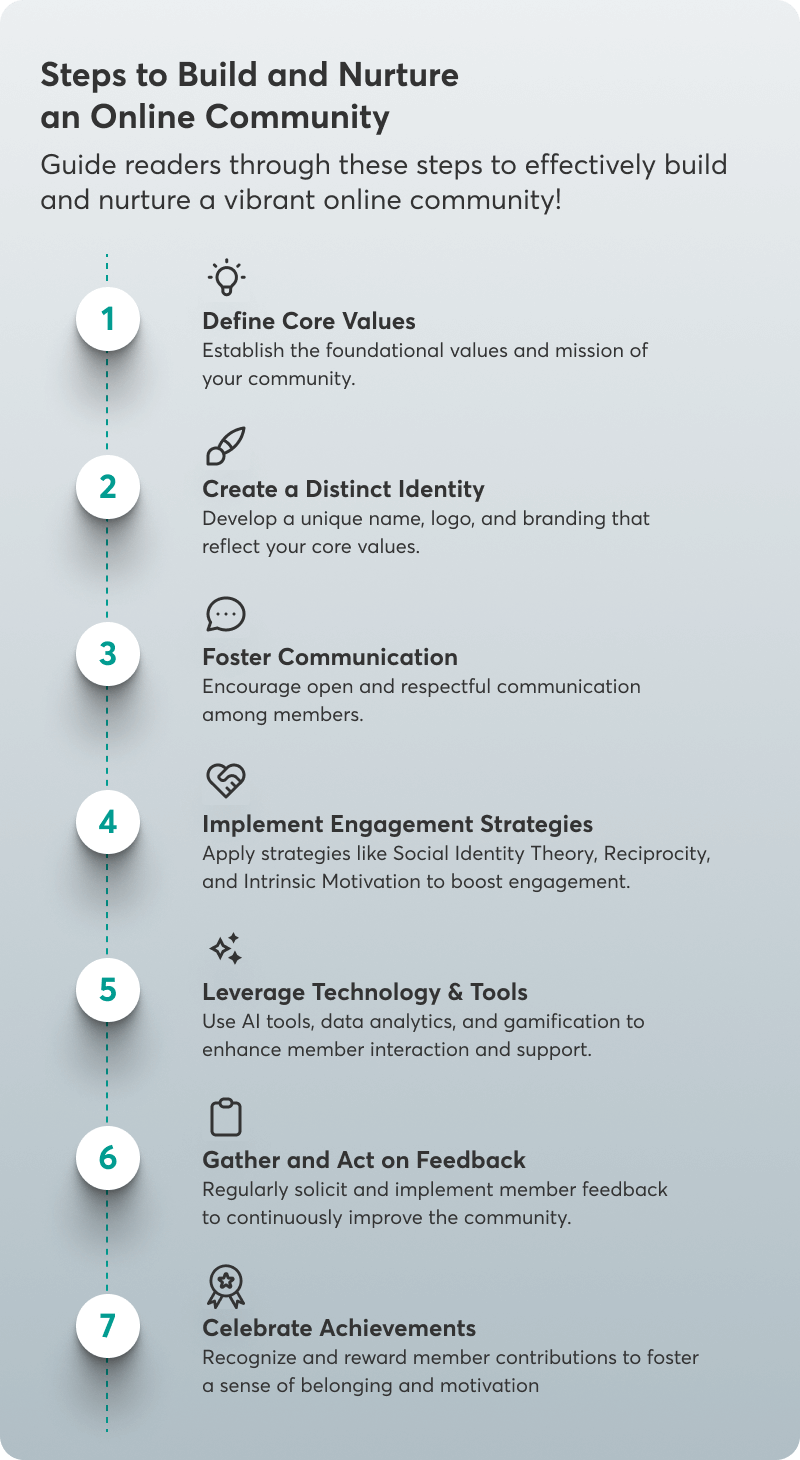
Here’s to Fan-tastic Engagement for Your Online Community!
Building an engaged and thriving online community requires a deep understanding of human psychology, a commitment to authenticity and trust, and a willingness to innovate and adapt.
By leveraging the strategies outlined in this article, you can transform your followers into fervent fans who are deeply invested in the success of your courses and business.
When you first start building an online community for your course business, creating that initial spark of engagement may be challenging. However, by focusing on authenticity and continuously iterating based on member feedback, you can cultivate a vibrant and supportive community.
Remember to implement initiatives, like collaborative projects where members can work together to create comprehensive study guides, to increase engagement while creating valuable resources for the entire community.
To achieve this, you need a platform like LearnWorlds that is flexible and robust enough to support your needs and scale with your online business. If you haven’t tried LearnWorlds already, take advantage of our’ 30-day free trial and experience firsthand all the great things you can accomplish!
(Visited 407 times, 1 visits today)
Rosemary is LearnWorlds’ Content Marketing Manager. She has over 2 decades of experience in omnichannel marketing and content writing for the IT and SaaS industry. Her expertise lies in crafting effective content marketing strategies that attract, engage, and nurture customers, enabling LearnWorlds to reach its target audiences with precision.

